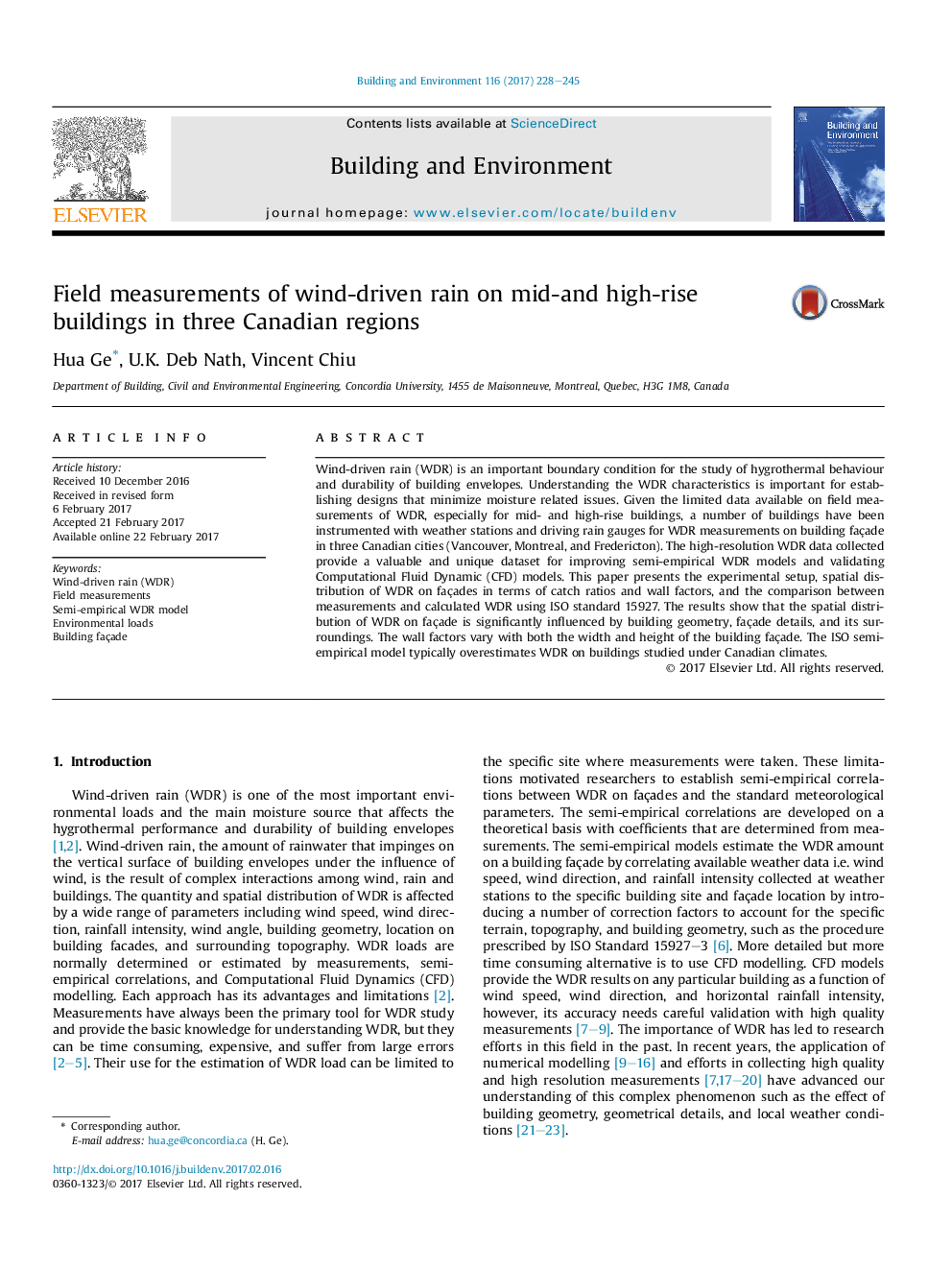| Article ID | Journal | Published Year | Pages | File Type |
|---|---|---|---|---|
| 4917390 | Building and Environment | 2017 | 18 Pages |
Abstract
Wind-driven rain (WDR) is an important boundary condition for the study of hygrothermal behaviour and durability of building envelopes. Understanding the WDR characteristics is important for establishing designs that minimize moisture related issues. Given the limited data available on field measurements of WDR, especially for mid- and high-rise buildings, a number of buildings have been instrumented with weather stations and driving rain gauges for WDR measurements on building façade in three Canadian cities (Vancouver, Montreal, and Fredericton). The high-resolution WDR data collected provide a valuable and unique dataset for improving semi-empirical WDR models and validating Computational Fluid Dynamic (CFD) models. This paper presents the experimental setup, spatial distribution of WDR on façades in terms of catch ratios and wall factors, and the comparison between measurements and calculated WDR using ISO standard 15927. The results show that the spatial distribution of WDR on façade is significantly influenced by building geometry, façade details, and its surroundings. The wall factors vary with both the width and height of the building façade. The ISO semi-empirical model typically overestimates WDR on buildings studied under Canadian climates.
Related Topics
Physical Sciences and Engineering
Energy
Renewable Energy, Sustainability and the Environment
Authors
Hua Ge, U.K. Deb Nath, Vincent Chiu,
